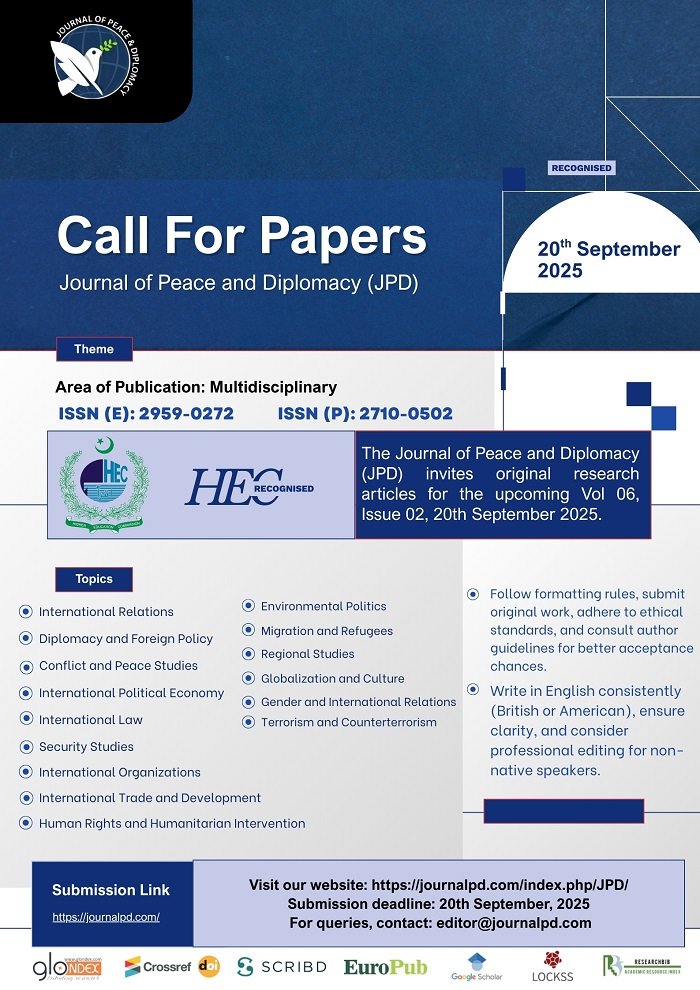North-South or South-South? Global Development Initiative and Middle Eastern Countries’ Development Strategies: A Study of Synergistic Pathways
DOI:
https://doi.org/10.59111/JPD.006.01.0119Keywords:
GDI, Development Plan of Middle East Countries, Development Deficit, Economic TransformationAbstract
The Global Development Initiative (GDI), proposed by China in the context of the profound changes in the global governance system and the compounded impact of the COVID-19 pandemic, represents a significant international public good. It aims to promote sustainable development, narrow development gaps, and enhance the self-reliance of developing countries. At present, the Middle East is grappling with interrelated challenges of development, peace, and governance deficits. Intensifying geopolitical rivalries, sluggish economic recovery, limited industrial diversification, and uneven development collectively constrain regional stability and growth. Focusing on key areas such as poverty alleviation, food security, green transformation, and the digital economy, the GDI aligns closely with the strategic priorities of Middle Eastern countries seeking economic diversification and sustainable development. The strong economic complementarity between China and Arab states provides a solid foundation for joint efforts to advance the GDI, with the potential to transform development dividends into drivers of peace, promote regional connectivity, and foster long-term stability. This paper systematically analyzes the alignment between the GDI and development strategies in Middle Eastern countries in terms of policy frameworks, industrial cooperation, and technological innovation. It summarizes prevailing cooperation models and emerging trends, and offers policy recommendations, including strengthening policy coordination, deepening innovation-driven collaboration, and enhancing regional cooperation mechanisms, to support the effective and high-quality implementation of the GDI in the Middle East.
Downloads
Published
How to Cite
Issue
Section
License
Copyright (c) 2025 Juan Ma, Run Ma, Yuting Ma

This work is licensed under a Creative Commons Attribution 4.0 International License.
Authors retain copyright and grant the journal right of first publication with the work simultaneously licensed under a Creative Commons Attribution (CC-BY) 4.0 License that allows others to share the work with an acknowledgment of the work’s authorship and initial publication in this journal.
















